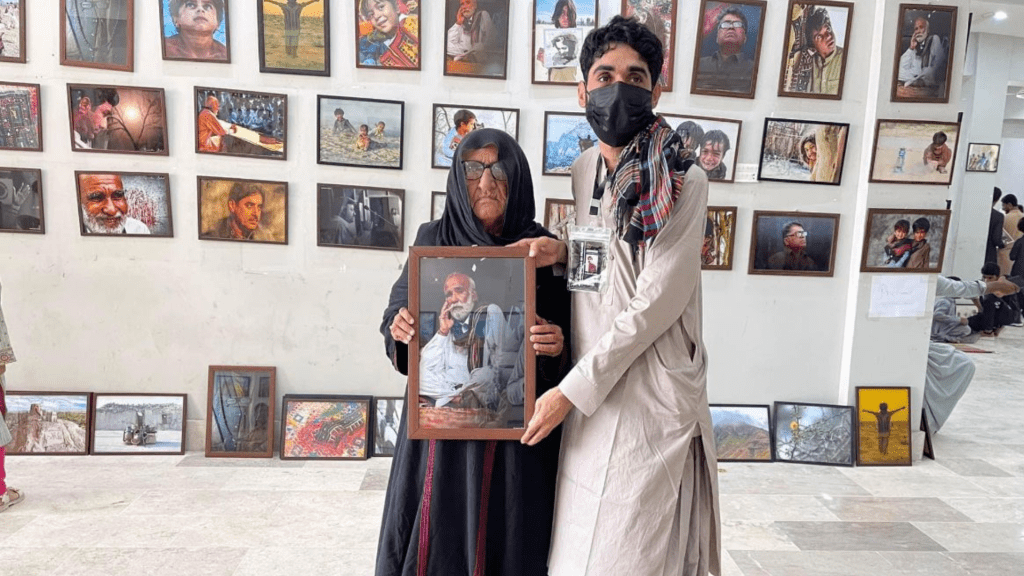A mass grave was found in Balochistan’s Panjgur district on 17 July, 2018, containing four bodies decomposed beyond recognition.
Relatives of missing persons, a term used for victims of enforced disappearances in Balochistan, flocked to the site of the mass grave fearing the bodies might belong to their loved ones. However, there was no way they could identify the bodies as they had been decomposed beyond recognition.
Thousands of people in Balochistan have been reported missing since 2004 when Pakistan’s military launched a brutal counter-insurgency operation in the province to curb a separatist insurgency. Bodies of hundreds of missing persons began appearing dumped in desolated areas in 2009.
S* was one of the first to rush to the site of the newly discovered mass grave in Darag e Dap, Parom, Panjgur, in the scorching afternoon of July 17. He was expecting to find the body of a man who worked at his crop fields. The man had been picked up by the military along with S’s uncle, who was released two days after the arrest.
“The mass grave was discovered by a truck driver,” S told Balochistan Times. “A group of truck drivers were on their way from the border village of Parom to the Panjgur town. They stopped about a kilometer from the Levies check-post and sent a representative to bargain the customary bribe to be paid to pass the Levies check-post. As they waited for his return, one of the truck drivers walked to a nearby hill to relieve himself when he saw a piece of cloth protruding from under the ground and being blown by the wind. When he approached the cloth, he saw human body parts under stones and rocks.”
He left the scene without further investigation, as he did not want to be involved in any trouble. People who have previously found dumped bodies have been grilled by security forces.
The truck driver drove to the Panjgur city where he talked about his discovery. The news broke like wildfire and dozens of relatives of missing persons drove to the site and dug four bodies out of the mass grave.
Darag e dap, literally meaning the opening to the gateway, where the mass grave was found, is situated on the brink of a dry lake, the Paromi Kap. The only dirt road connecting the villages of Parom with Panjgur forms a bottleneck over here. The Levies, a local civilian law-enforcement agency, has established a check-post at this bottleneck to control the entry point to Parom.
The check-post controls the passage of Iranian goods smuggled into Pakistan by Baloch truckers who pay a settled amount to security officials for safe passage. The check-post personnel also help paramilitary FC personnel during their operations against Baloch militants by blocking the passage.
Parom area of the district Panjgur shares a long border with Iranian Balochistan and is one of the heavily militarized areas in the district. It is reported that around 2,000 army personnel are stationed in the area while the total whole local population does not exceed 4,000.
Prolonged fightings between Baloch militants and the military have forced many locals to migrate to safer locations. Recent census in Pakistan showed Panjgur had one of the lowest population growth rates in Pakistan confirming reports of mass displacements.
One such internally displaced person, who has migrated to the Iranian side of the border, said he feared his missing cousin, Khan Jan shad, could be among the dead found in the mass grave.
Since all their family has migrated from Parom to Iran, there is no one to go and see the bones. “We asked other people to help us, but they are afraid to get involved in such cases,” he said.
When S* reached the site, he found the mass grave at once where dozens of people had already gathered with the hope to identify the bodies.
They were carrying shovels to dig the site. The bodies were not buried deep. Within a few minutes of digging, they unearthed four bodies. All their hopes evaporated in thin air as none of the bodies was recognizable.
The bones were then collected by the locals with the help of the Levies force and transported to the Panjgur city.
“Some of the bones were so fragile they broke into pieces as soon as one touched them,” said S, as many locals feared some sort of chemical had been used on the bodies.
A similar mass grave was discovered in Panjgur district in May 2011. The dead bodies were later recognized as that of Abid Shah, Abdul Sattar and Safeer Baloch, all of them political activists previously picked up by Frontier Corps in broad daylight from the Panjgur downtown. The dead could only be recognized by the shoes and pieces of clothes still on their bodies.
Another mass grave was also discovered in district Khuzdar’s Tootak village in January 2014. Naseer from Balochistan’s Awaran area was among the 169 dead found in the mass grave. Naseer had been abducted from Awaran city by Frontier Corps in front of villagers.



